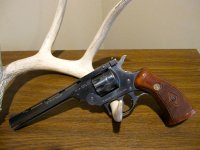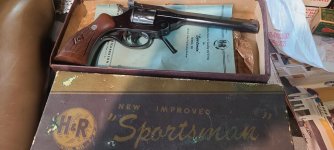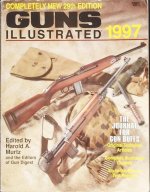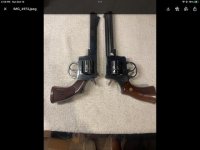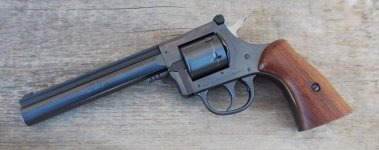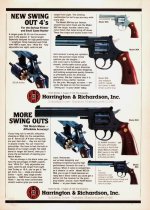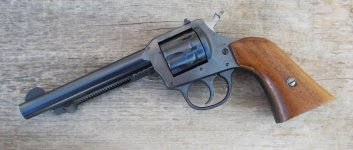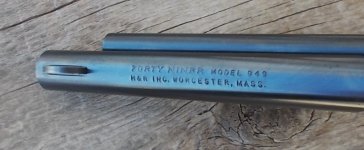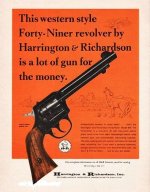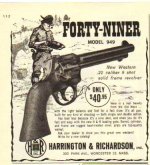[FONT="]In the first post of this thread I mentioned that my 1981 vintage Sportsman had a fluted rather than a ventilated barrel rib. [/FONT]
[FONT="]Allow me to recap the progression in this regard. The prewar and early postwar Sportsman had a solid rib. This style persisted even through the move away from the birdshead grip frame to the modern square butt one in the early 1950's. Sometime in the mid to late 1960's, the ventilated rib was introduced (note that this remained integral to the barrel, unlike the screwed on one of the 939 shown above). Then around 1980, the vents became merely flutes.[/FONT]
[FONT="]In the 29th Edition of Guns Illustrated (1997) there was published an article by Gary M. Brown discussing the history of the Sportsman in which he details the reason for the move away from a ventilated barrel rib to a fluted one. I'll quote him here:[/FONT]
[FONT="]"A long-time H&R employee states that there was a very pragmatic reason for this subtle change, Due to the 1100-degree hot-bluing process used by the 'old' Harrington & Richardson, combined with a slight loss of structural integrity caused by the removal of metal necessary to create a true ventilated rib, considerable barrel warping had been experienced. Rather than simply returning to the unadorned plain rib, the current fluted effect was adopted."[/FONT]
[FONT="]I'd not heard this before. It leaves open the question of, if such difficulties had been encountered with the production of the ventilated barrel (accompanied by the wastage this would've entailed), then why did H&R continue making the Sportsman in that configuration all the way through the 1970's?[/FONT]

